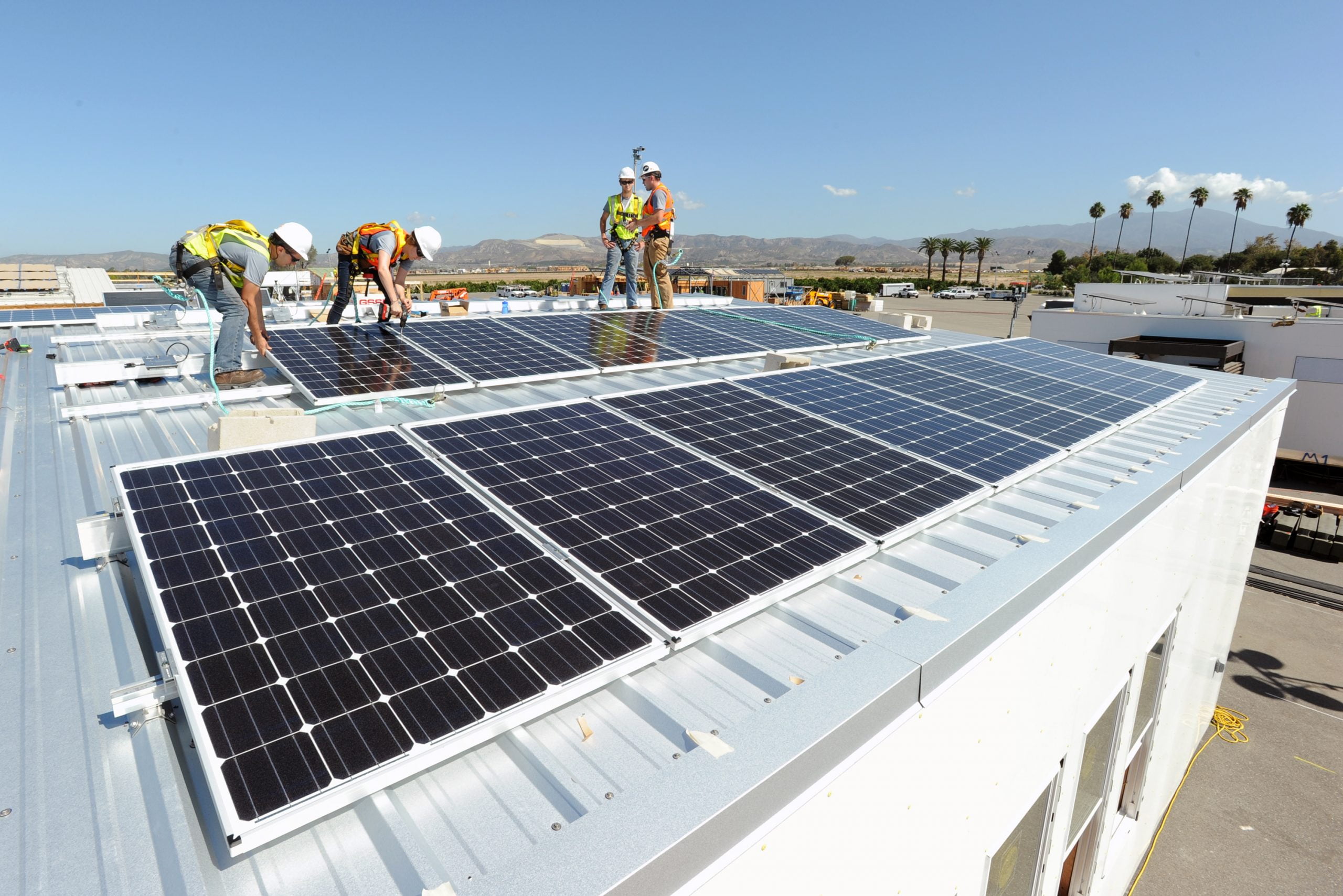Everyone seems to agree. Builders, brokers, appraisers, and advocates of all kinds will tell you that we have the technology for zero energy buildings: insulation, air tightness, energy efficient windows, and a variety of other energy saving mechanical equipment. All are off-the-shelf products, right down to the solar electric panels. So what’s holding us back from making every home, school, shopping center and sports arena produce as much energy as it uses?
The answer is money. No one can dispute that zero energy buildings and all their components are sure-thing, slam-dunk money makers… in the long run. The only remaining obstacle for making zero energy standard in every building is finding the up-front capital to pay for the efficiency measures. The key to overcoming that obstacle is financing. Luckily high-performance buildings have a built-in source of cash flow that make financing feasible. Typical buildings bleed money in every monthly utility bill. If you stop the bleeding, you get to keep the cash.
A very successful business model is based on this principle. It’s called an energy savings performance contract and it works like this. An energy service company (ESCO) will pay the full cost of installing energy-saving measures in return for the monthly savings the measures create. The customer may get a portion of the savings, but most of the new cash flows to the ESCO.
What if building owners had access to the capital needed to fund their own improvements? What if more profitable measures helped to pay for less lucrative ones? What if a school could slash its monthly energy bill, while funding improvements from the savings and still have money leftover to enhance instruction and materials? Now there is a method that can accomplish all this. It’s called a Property-Assessed Clean Energy (PACE) loan and it’s designed to leap the first cost barrier. PACE loans stretch repayment over a long period to keep monthly payments low, similar to a home mortgage or a municipal bond.
PACE programs unlock vast opportunities to save energy and make money at the same time. They finance 100% of the energy improvements at fairly low interest rates and then spread the payment over as much as 20 years. The long repayment period ensures that monthly revenue exceeds the monthly debt service, effectively creating a profit for the building owner.
As of this writing, 33 states have passed laws that will allow PACE programs, including New York, California, and Texas. Nineteen states have PACE programs already in operation, most of them at the local level. Here’s how it works. A city or county government sells bonds to establish a loan fund. Property owners borrow money to pay for improvements. Their loan payments go back to the fund or pay off the bond. The loan is secured by a lien against the property. In some cases, the local government that sold the bonds also collects the payments along with property taxes. In other cases, utilities or non-profit organizations administer the loans. Because the loan is linked to the property and not the owner, the debt can be passed on to future buyers. Subsequent owners will also benefit from lower energy bills, allowing them to profit from the arrangement as well.
Although PACE programs have been around for several years, they’ve been slow to catch on. Because the loan is backed by a property lien, some mortgage lenders objected. They feared that lien holders (local governments) would capture the equity if buyers defaulted on their PACE loans or mortgages. That’s unlikely because energy-efficient properties tend to have lower default rates than those with high monthly expenses. Nevertheless, the fear of messy defaults has prevented widespread adoption. To break the logjam, the US Department of Energy developed Best Practices Guidelines for Residential PACE Financing Programs. In addition, new rules were recently released by the Federal Housing Administration and the Department of Veterans Affairs that allow properties with PACE loans to be purchased by secondary mortgage programs. These programs are operated by Freddie Mac and Ginnie Mae (the quasi-government companies that purchase mortgages from loan originators). This means that properties with PACE loans can now change hands and the mortgages can be sold on the secondary market.
If you’d like more information about PACE, finding a program or creating your own PACE program, visit PACENation. Expect to see many new programs popping up. With widespread adoption of PACE funding, the last obstacle will be removed to creating a built environment where energy efficient, high-performance homes and buildings are the norm.


Bruce Sullivan says:
A new hybrid financing approach has appeared that allows non-profits to take full advantage of financial incentives, including tax credits. The idea is described in a blog post by Tina Casey:
“Collective PACE™ delivers a discount to nonprofits through the upfront monetization of tax incentives by the third party, while simultaneously allowing nonprofits to take advantage of the longer-term, lower-cost financing available through C-PACE.”
See all the details here.
New Solar Financing Model for Nonprofits Blows a Hole in Tariff Barrier
https://www.triplepundit.com/2018/08/new-solar-financing-model-nonprofits-blows-hole-tariff-barrier/